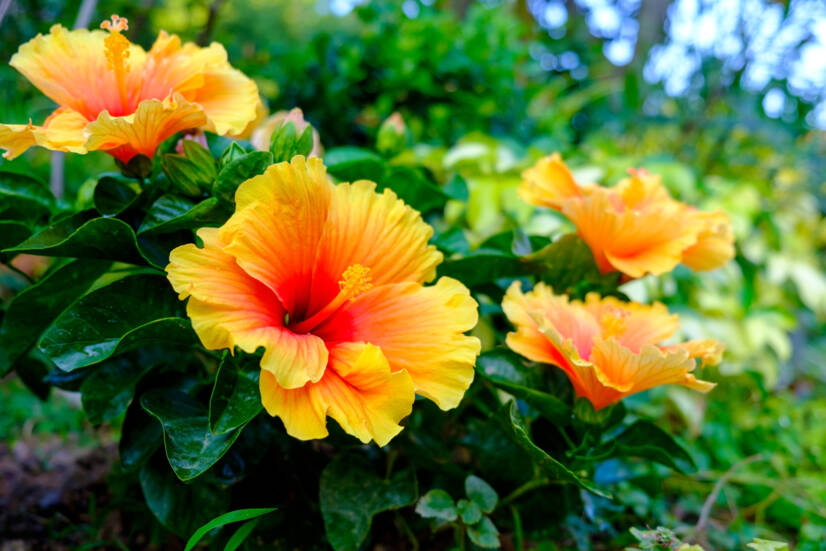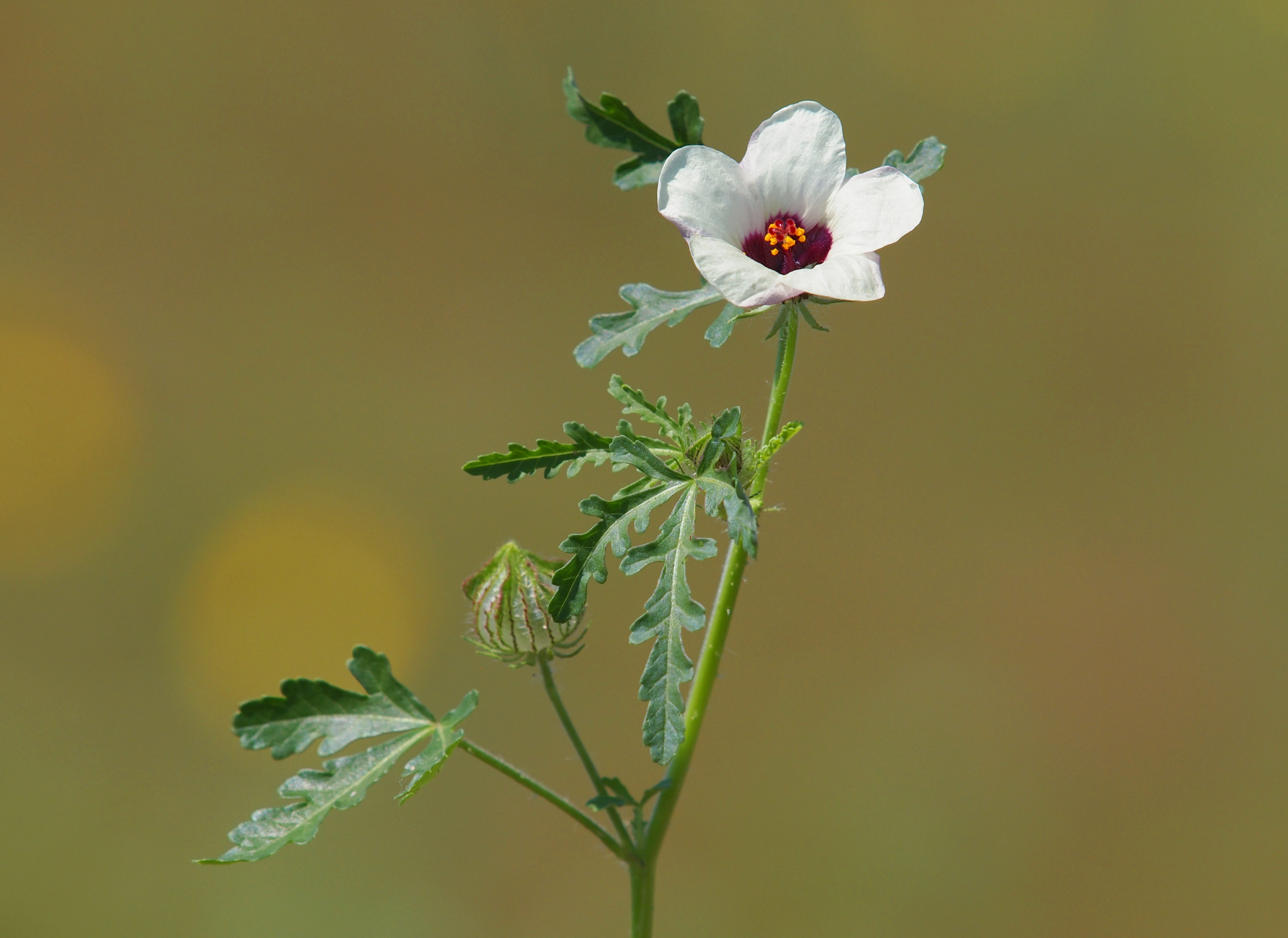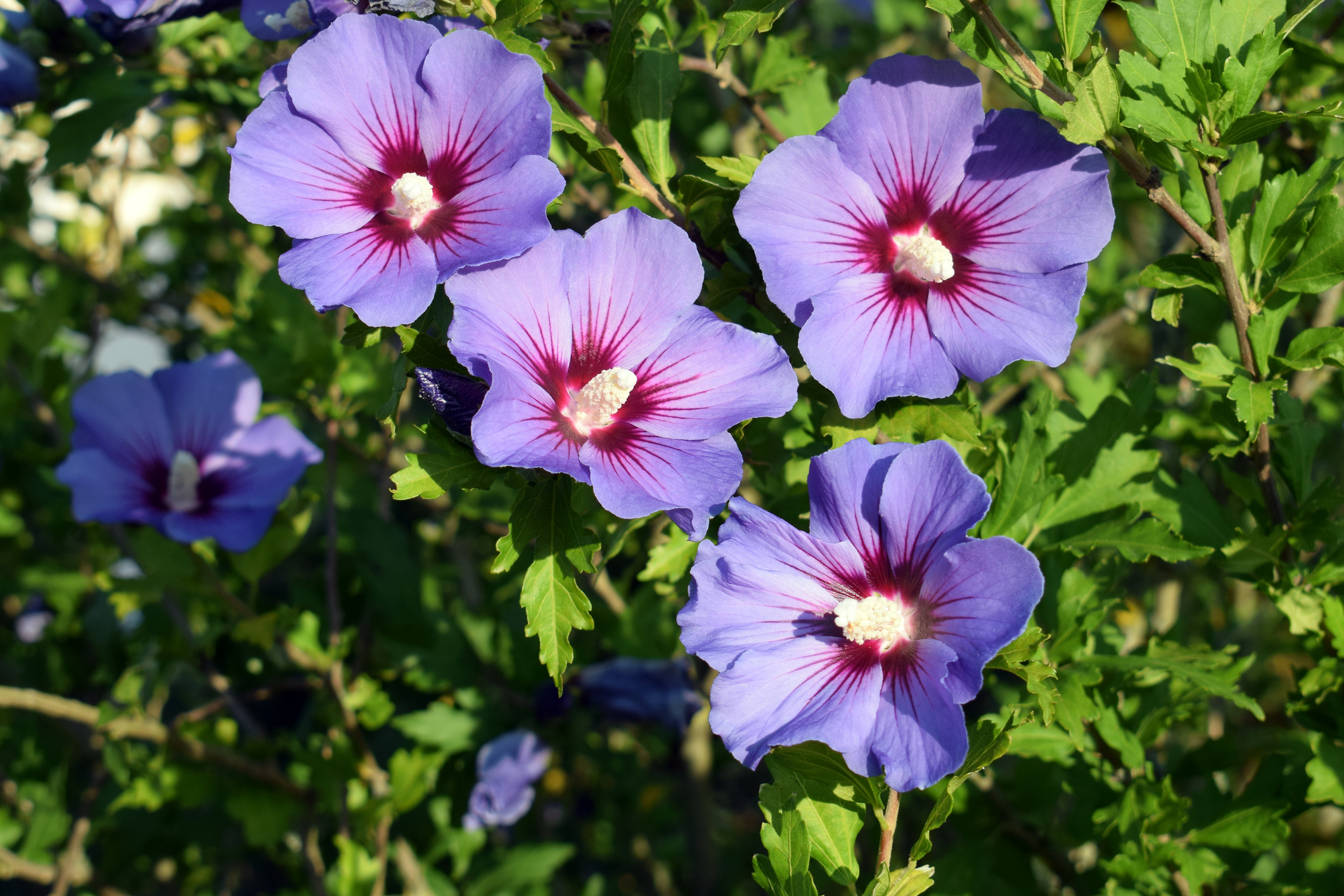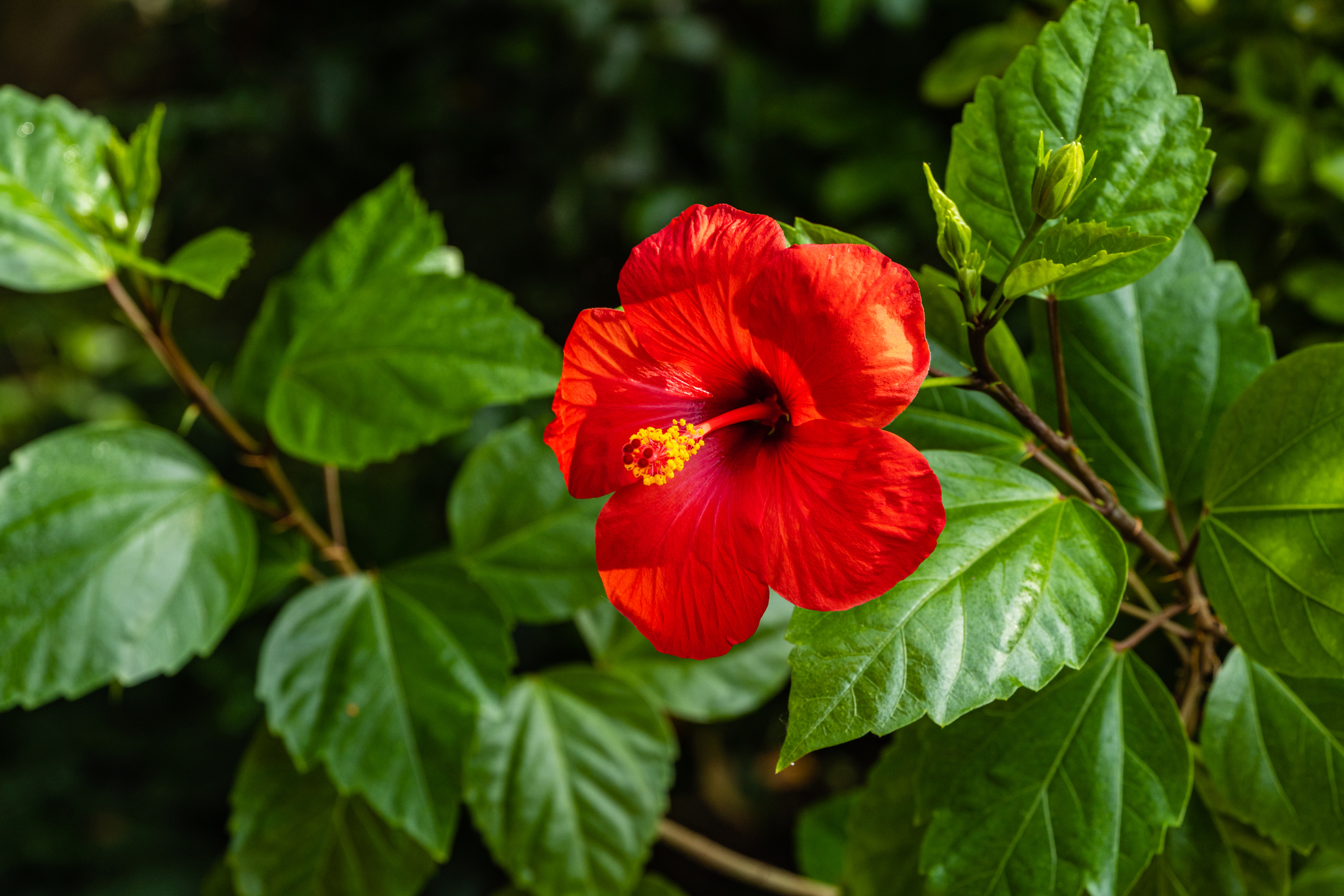- pubmed.ncbi.nlm.nih.gov - A review on phytochemistry and therapeutic uses of Hibiscus sabdariffa L, Ghazala Riaz, Rajni Chopra
- pubmed.ncbi.nlm.nih.gov - A review of the efficacy of hibiscus in the treatment of metabolic syndrome, Tia D Jeffery, Matthew L Richardson
- medlineplus.gov - Hibiscus sabdariffa
- healthline.com - Everything you need to know about hibiscus
- healthline.com - 8 benefits of hibiscus tea
- mojerastliny.sk - Hibiscus sudansky
- mojerastliny.sk - Hibiscus chinensis, the Chinese rose
- mojerastliny.sk - Syrian Hibiscus
- botany.cz - HIBISCUS TRIONUM L. - hibiscus tridielny
- botany.cz - HIBISCUS ROSA-SINENSIS L. - hibiscus, Chinese rose / hibiscus
- botany.cz - HIBISCUS SYRIACUS L. - Syrian hibiscus / HIBISCUS SYRIACUS L. - Syrian hibiscus
- botany.cz - HIBISCUS SABDARIFFA L. - Sour Hibiscus / Syrian Hibiscus
- botany.cz - HIBISCUS MOSCHEUTOS L. - Marsh Hibiscus
- rostlinky.sk - Hibiscus PESTOVANIE
Hibiscus and its uses for health? What effects does it have and what types?

There is more to hibiscus than you might think. Apart from its attractive appearance, you will be surprised by its versatile use in the kitchen and its positive health benefits. What makes hibiscus so special and why should we all have it in the garden?
Characteristics
It is classified as a flowering plant in the mallow family (Malvaceae). There are several hundred species of hibiscus. Depending on the species, they can be herbaceous or woody shrubs, and some species take the form of trees.
Naturally, the hibiscus is native to warm temperate, subtropical to tropical regions. It is characteristic of, for example, India or Malaysia.
Hibiscus is an annual or perennial plant, depending on the species.
The leaves of hibiscus are most often ovate or lanceolate and grow alternately on the stem. The edges of the leaves are lobed or serrated. They may be covered with hairs or completely smooth.
The flowers grow singly or in clusters. They are funnel-shaped, relatively large and vary in colour. In some species the colour of the flowers may change with the age of the plant.
The fruits of the hibiscus are dry five-inch capsules, white or red in colour.
Species of hibiscus
The most well-known species of hibiscus include:
- Hibiscus moscheutos, sometimes called the American hibiscus.
- Chinese Hibiscus (Hibiscus rosa-sinensis), also popularly known as the Chinese rose
- Hibiscus trionum
These hibiscus species are most commonly used for decorative purposes. They occur in gardens as ornamental plants or as part of hedges.
The Marsh Hibiscus is a large variegated herb with flowers ranging from white, powder pink, pink, red to burgundy with a striking red centre.
The leaves are ovate, dark green and have a serrated edge. The flowers grow to 15 cm in size, have five petals and can be found in red, orange, yellow, pink or white. A distinctive stamen-like formation protrudes from the centre of the flower.
Hibiscus trifoliate is a perennial herb. It has a branched stem on which the stem leaves grow. The leaves are multi-parted, oblong with notches. The flowers consist of five petals and are white to yellow with a purple centre.

Hibiscus syriacus is an edible species of hibiscus. It is a shrub with petioled leaves about 10 cm long and dark green in colour.
The five-petalled flowers grow to a size of 8 cm. They are usually white, pink or purple with darker red spots in the centre of the flower.
The young leaves are used in tea blends.
Species of hibiscus with medicinal properties include:
- Sudanese hibiscus (Hibiscus sabdariffa), also known as blood hibiscus
- Pink Hibiscus (Althaea rosea)
- Edible Hibiscus (Hibiscus esculentus)
The stem is coloured purple. The leaves are petiolate and divided into lobes with a serrated margin.
The five-petalled flowers are cream, yellow to pale pink with a dark purple centre. The fruit is a capsule surrounded by a characteristic fleshy and juicy green to red coloured calyx.
The leaves are alternate, lobed and lobed. The flowers are pale yellow with a brownish-red centre. The fruits are pod-like, 15-40 cm long.

A wide variety of hibiscus species
Different species of hibiscus are used in different sectors, whether in industry, food or medicine.
The hibiscus has an important place in horticulture. It is a very hardy and versatile plant that will enrich any garden. In addition to gardens, it can be grown in parks, urban areas or on balconies, even as a houseplant. It thrives in soil but also in pots.
The large hibiscus flowers are also used as an attractant to attract insects such as butterflies and bees.
In industry, some hibiscus species are used to make paper or rope. In Polynesia, hibiscus wood is used to make canoes.
For several centuries, edible hibiscus species have also been used in the food industry. The leaves, flowers, seeds and stems of hibiscus, and sometimes the roots, are mainly used for consumption.
The leaves and soft stems are used raw in salads or cooked and served with meat or fish. They can also be dried.
Hibiscus seeds are rich in protein and are added to sauces and soups. Roasted, they are used as a coffee substitute.
In addition, oil is pressed from the seeds, which is then used in industry or added to cosmetic products.
The flowers and especially the fleshy calyxes are harvested before the seeds ripen. In fresh or dried form, they are used to make drinks and lemonades, syrups, jams or gelatine. They are also used in wine production or in the confectionery industry for baking cakes (as part of the icing).
Due to the presence of colouring agents, they also serve as a natural food colouring. In some countries, they are also used to preserve fruit.
Dried flowers or calyxes are part of tea blends.
Last but not least, hibiscus is also characterised by its medicinal properties and has therefore occupied an important place in traditional medicine for many years.
In various parts of the world, different parts of hibiscus are used for colds, toothaches, urinary tract infections or to relieve 'hangovers' after alcohol.
In Thai traditional medicine, hibiscus is used against kidney and urinary stones. In India it is used to relieve pain in digestive or urinary disorders and in Mexico for high blood pressure.
In addition, hibiscus is used in traditional medicine for gynaecological problems, coughs, abdominal cramps, liver disorders, elevated cholesterol levels and as an antimicrobial.
Hibiscus is also used in the animal kingdom to reduce bloating in cows, goats or sheep and in combination with salt to relieve diarrhoea.

Hibiscus content
The positive effects of hibiscus on the body are due to the constituents contained in the different parts of the plant. The substances present and their amounts vary depending on the specific part of the plant.
Probably the richest source of beneficial substances is the hibiscus calyx. The calyx contains mainly carbohydrates (glucose and fructose), fibre, protein, vitamins (especially vitamins B2, B3, C or E) and, last but not least, minerals.
The most abundant minerals are calcium, iron, potassium and magnesium.
Anthocyanins, which belong to a large group of polyphenols, are important substances with strong antioxidant activity. As plant dyes, anthocyanins are responsible for the characteristic colour of hibiscus flowers.
Various organic acids such as citric, tartaric, malic and polyphenolic acids are also found in the calyx.
It is thanks to the wide range of substances contained in hibiscus, and in particular hibiscus calyxes, that hibiscus is used as a food supplement or as a functional food ingredient.
Hibiscus leaves contain mainly proteins, fats, carbohydrates, vitamins B2 and C, β-carotene, phosphorus and iron. They also contain high amounts of antioxidant and anti-inflammatory polyphenols (especially chlorogenic acid and its isomers).
Hibiscus seeds are rich in fatty acids, especially palmitic, stearic, oleic and linoleic acids.
Among the minerals, potassium, sodium, calcium, phosphorus and magnesium are also present. In addition, carbohydrates, protein and fibre are also present in the seeds.
Of all these substances, the most medicinal are polysaccharides, organic acids and anthocyanins, which are polyphenols.
So what are the effects of hibiscus and what health problems can benefit from its consumption?
Internal use
Consumption of hibiscus seeds, leaves, flowers, calyxes or stems is considered safe, always in reasonable doses.
One of the most described effects of hibiscus is its antioxidant action.
The antioxidant effect is mainly attributed to polyphenols and anthocyanins, and to a lesser extent to vitamin C or β-carotene.
The main role of antioxidants is to scavenge free oxygen radicals in the body. Oxygen radicals are harmful reactive molecules that cause damage to cells. We speak of oxidative stress.
Oxidative stress contributes significantly to the development of chronic disorders and diseases such as high blood pressure, various heart diseases, diabetes, cancer, etc.
Although the human body has its own antioxidant cells, the intake of foods rich in antioxidants enhances and promotes a preventive effect against damage and disease.
Other effects of hibiscus include:
- anti-inflammatory action
- reduces the risk of obesity
- counteracts elevated blood lipid levels
- helps lower blood pressure
- anti-anemic effects
- reduces the rate of platelet clumping
- diuretic effect (increases urine production and excretion)
- counteracts the formation of urinary stones
- protective effects on the liver and kidneys
- antimicrobial effect
- anti-cancer effects
- reduces the absorption of alcohol into the blood
- beneficial effects in diabetes, liver disorders or metabolic syndrome
The anti-inflammatory action of hibiscus is related to a reduction in the production of inflammatory markers in the body.
Hibiscus promotes weight loss and thus prevents obesity. It can also reduce the amount of fats (including cholesterol) present in the blood. This has a preventive effect for the development of cardiovascular disease, obesity or liver disease.
It also has a significant effect on lowering blood pressure. This may again act as a preventive measure against the development of cardiovascular disease or kidney damage. Hibiscus has even been shown to have a protective effect on the heart.
Hibiscus can also be taken for anaemia. This is due to its iron and vitamin C content. Iron is a natural component of the blood pigment haemoglobin and vitamin C in this case promotes iron absorption.
The diuretic effect of hibiscus is related to lowering blood pressure.
The effects of hibiscus on the liver are mainly based on its antioxidant action. It protects the liver from the effects of toxins, certain drugs and also from excessive fat storage.
Hibiscus even has antimicrobial effects, i.e. it has the ability to destroy certain types of bacteria. This effect is mainly used in traditional medicine for the treatment and prevention of urinary tract infections.
The anti-cancer effects of hibiscus are again based on its antioxidant action. Some studies have reported that it helps to reduce the growth of cancer cells and enhances the effect of chemotherapy in the treatment of breast cancer.

How to use hibiscus safely?
Preparations containing hibiscus for consumption can take different forms.
Probably the easiest and most common way to get hold of hibiscus is to buy a tea containing hibiscus or grow your own.
Consuming hibiscus in the form of teas is generally considered a safe way to consume it. The most commonly used species in teas is the Sudanese hibiscus.
Hibiscus tea can be drunk both hot and cold. Hibiscus has a sour taste similar to cranberries. You can therefore add honey or sugar to your tea.
Less commonly used hibiscus preparations are in the form of extracts, powders or capsules. No standard dosage has been established for hibiscus preparations. It is therefore necessary to follow the instructions of the manufacturer of the preparation.
Risks of using hibiscus
The use of hibiscus preparations intended for internal use is governed by certain rules.
Although it is a plant and therefore a natural substance, incorrect or excessive use can have negative consequences for human health.
The liver usually comes first. Improper or excessive use can cause liver damage.
In some cases, an allergic reaction to hibiscus can occur, even when the correct dosage is taken. This reaction is most often manifested by digestive problems, abdominal pain, bloating or constipation. In such cases, the use of hibiscus should be stopped immediately.
It is necessary to approach the use of hibiscus with caution if you regularly take certain medications. It may happen that hibiscus and its contents will interact with the medication you are taking.
This can lead to affecting the effectiveness of the medication and subsequent complications such as increased incidence of side effects and even toxicity.
If you are taking medications to treat diabetes, high blood pressure, high cholesterol, or anti-inflammatory medications, discuss the safety of taking hibiscus with your doctor.
It is also not recommended to combine hibiscus with other herbal medicines and products that lower blood pressure and blood sugar.
Hibiscus should also not be used by pregnant and breastfeeding women because of the increased risk of miscarriage and harmful effects on the baby. Hibiscus should also not be used by children.
External use
Due to the presence of oils or other substances, it is added to cosmetic products intended for hair.
It is particularly effective against dandruff and hair loss. Overall, it nourishes the hair, stimulates the hair follicles, thereby promoting hair growth, reducing premature greying of hair.
Also, thanks to its antimicrobial effects, it counteracts itching of the scalp.
Hibiscus is also used in skin care products, where its antioxidant potential is exploited. It eliminates the action of free radicals on the surface of the skin.
It has a rejuvenating effect on the skin with natural regenerating, moisturizing and exfoliating effects.
Thanks to the presence of vitamin C, it reduces excessive pigmentation and blemishes on the skin, helps to fight blackheads on the skin. It improves the skin texture and also suppresses inflammatory processes, itching and redness of the skin. It is therefore a good helper for acne.
It also slows down the breakdown of collagen in the skin. It is therefore classified as an anti-aging agent.
Among other things, hibiscus helps various skin defects heal faster.

Harvesting and storage
The cultivation of hibiscus began in Europe in the 16th to 17th centuries.
Syrian hibiscus is planted in spring. It requires a sunny environment and plenty of moisture. It flowers in summer and autumn.
The young leaves and flowers are harvested for consumption before flowering. They can be dried or used fresh.
Sudanese hibiscus is also usually planted in spring. It requires plenty of sun and can tolerate dry periods. It flowers from late August to early October.
The ripe fleshy calyxes of this hibiscus are usually harvested and simply broken off or cut. The calyxes form after flowering and are harvested approximately 3-7 days after the flower has fallen.
The petals are separated from the seeds when the calyxes are still fresh. Both can be left to dry or the fresh calyx is consumed immediately.
Young leaves can also be used and are either fresh or dried. The flowers are collected before flowering.
It can be grown in the garden or as a houseplant. It is sensitive to frost and is therefore planted in gardens from May to July. It prefers a warm and sunny environment. It needs plenty of moisture and nutrients.
It can be harvested as immature, pod-shaped fruits about 3-5 days after flowering. If the aim is to get seeds, leave the fruits to ripen for several weeks.
Pink Hibiscus requires a sunny, moist, wind-protected environment to grow. It flowers from July to September. Only varieties with purple coloured flowers are used for medicinal purposes.
The flowers are mainly harvested and usually dried. The young parts of the stem or young leaves are also suitable for consumption.
The other hibiscus species are more for decorative purposes and are a pleasant addition to any garden.
Marsh Hibiscus requires a moist and sunny environment. It flowers from about April to May and its flowers often last until the first frost. Garden-grown hibiscus should be cut back for the winter and the roots covered with bark or leaves.
It can also be grown in pots. It needs a wooden, ceramic or brick pot.
In temperate conditions, Chinese hibiscus is only grown as a houseplant. It is sensitive to frost and therefore requires wintering indoors. It needs plenty of light and only a small pot, as it only roots very shallowly.
It flowers from spring to autumn. Pruning should ideally be done in spring.
It usually grows as a weed in fields. It flowers from July to September.
Is your hibiscus not flowering?
This may be because the pot is too large. The roots of the hibiscus are very shallow and it thrives if the roots are placed close together. Try transplanting it into a smaller pot.
Also check the conditions in which the hibiscus is growing. Most hibiscus species need plenty of light and moisture and do not like draughts.
Hibiscus can survive frost
Apart from the Chinese hibiscus mentioned above, all hibiscus grown in gardens are frost resistant and can withstand frosts down to - 25 ºC if properly wintered.
If their roots are covered with bark, straw, leaves or needles for the winter, they will last until spring without major problems. Pruning is usually carried out in spring for all species.
Interesting resources










